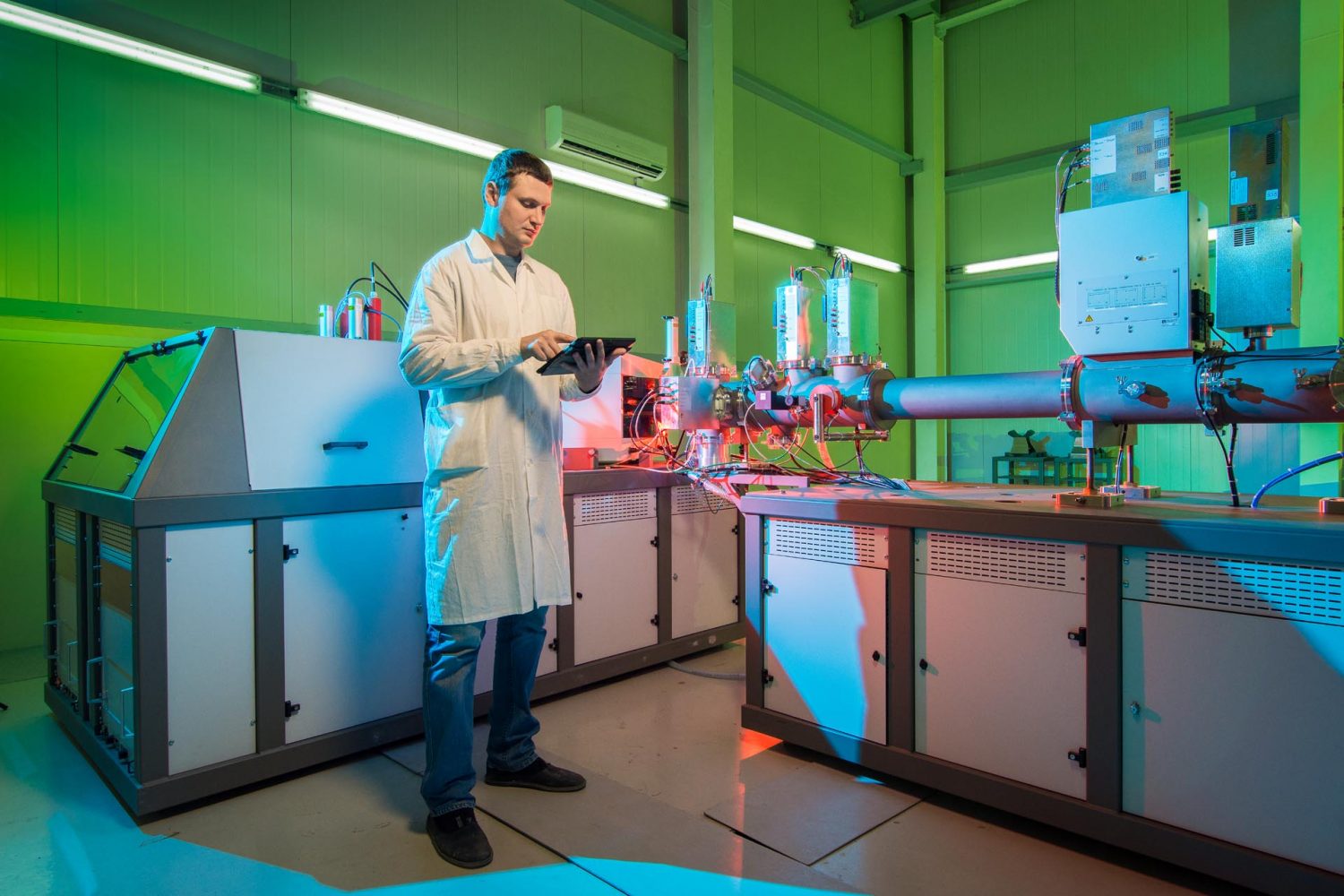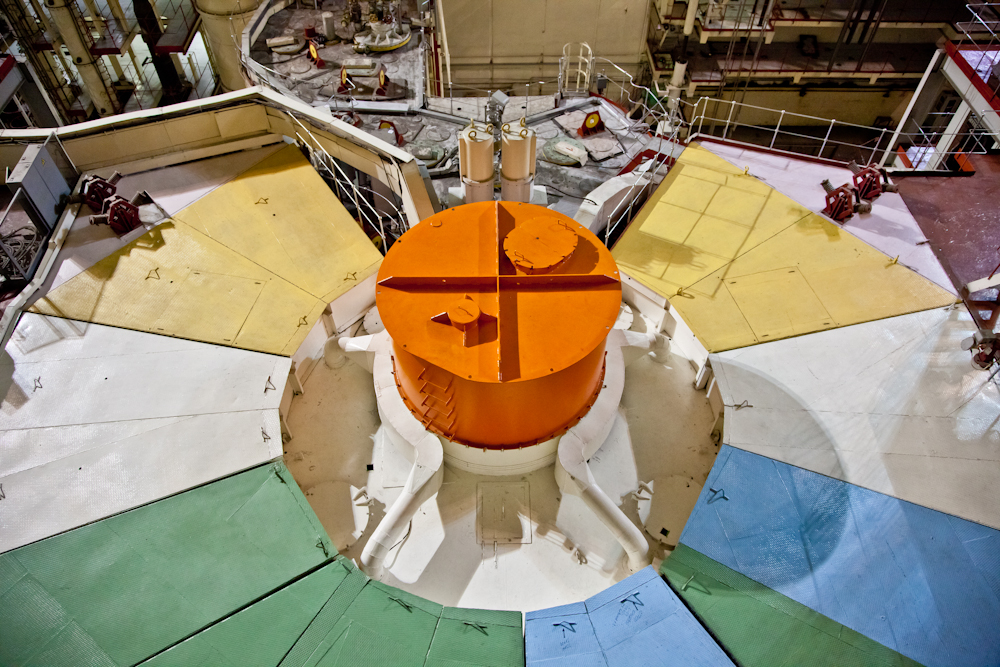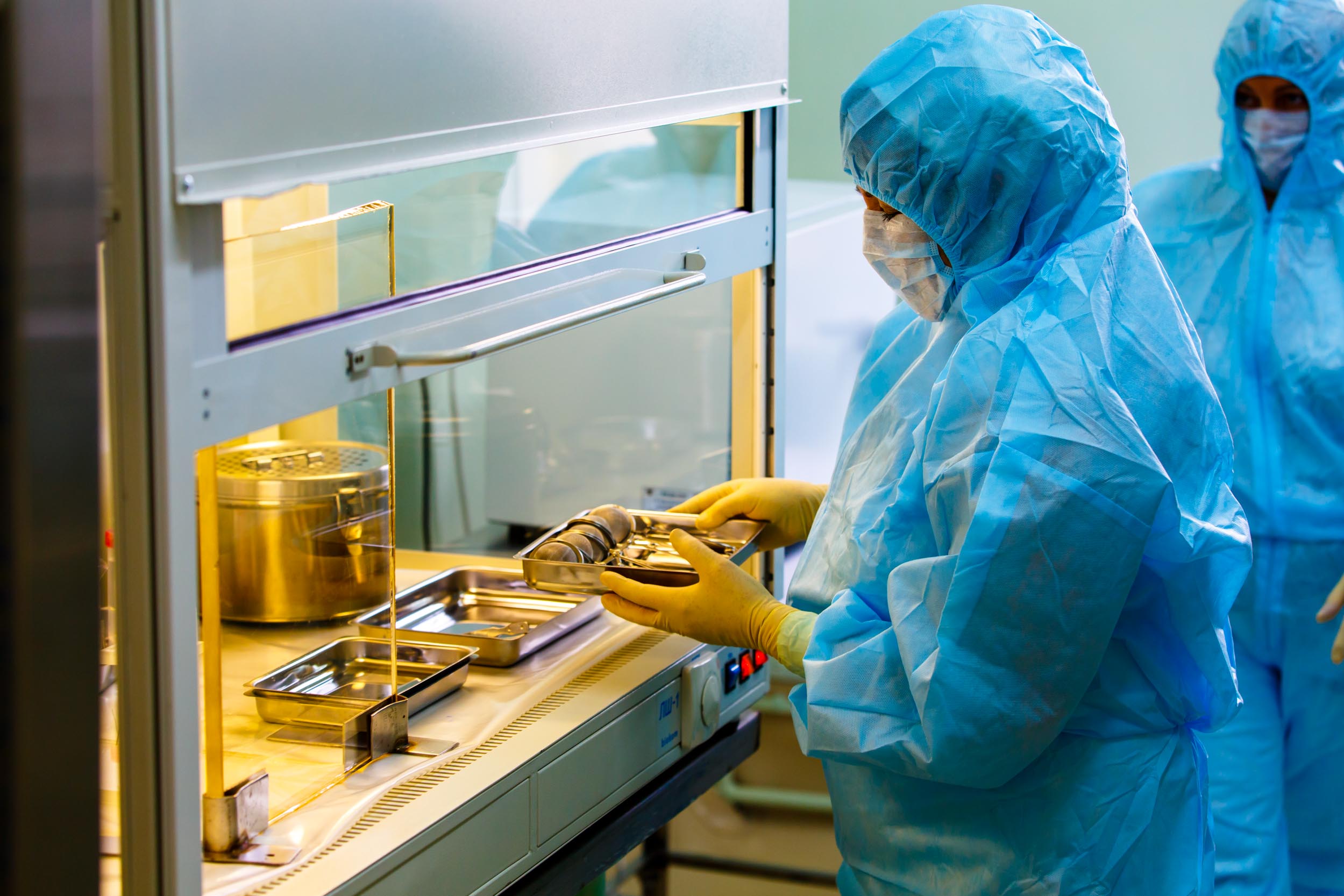
Fast Neutron Science
back to contentsThe institute was established on April 27, 1946 as a research laboratory codenamed Laboratory B. Its task was to develop a nuclear reactor for power generation. In 1946–1947, researchers considered the possibility of creating a “uranium machine running on enriched uranium and light water”. Among the first employees of Laboratory B, there were Alexander Leipunsky, after whom the Institute of Physics and Power Engineering was later named, and Dmitri Blokhintsev, the first director of Laboratory B.
In the late 1940s and early 1950s, Alexander Leipunsky was making calculations for reactors with different cores, coolants, controls, etc. His work laid a foundation for research into fast neutron and intermediate neutron reactors, one of the key research areas for the laboratory.
At the same time, Dmitri Blokhintsev agreed to Igor Kurchatov’s proposal to turn the laboratory into an R&D center for the first nuclear generating station. In July 1951, Laboratory B was commissioned to engineer a water-cooled nuclear power plant and build it in Obninsk. Construction began later the same year. On June 26, 1954 the word’s first nuclear plant was connected to the grid.

After the Obninsk nuclear power plant was put into operation, Laboratory B got down to developing a nuclear power plant design for the Arctic. The first practical embodiment of this design was Bilibino NPP. The work on the plant began in 1963. The Bilibino NPP consists of four 12 MWe power units commissioned in 1974–1976. EGP‑6 reactors were developed at Laboratory B specifically for the Arctic nuclear station. What differs them from other reactor designs is natural coolant circulation. Saturated steam is produced right in the core channels and not in the superheater. In fact, Bilibino power units are an example of small modular reactors, 50 years ahead of broad interest towards small-scale generation. The plant is still in operation but will be shut down soon and replaced with the world’s only floating nuclear plant, another SMR developed at Rosatom.
Fast neutron reactors have long become a trademark and a symbol of the laboratory. Back in 1950, Alexander Leipunsky prepared a memorandum entitled ‘Fast Neutron Systems’, which set a direction for research and outlined an area of future studies. A pilot fast neutron reactor was started up in 1955. Its second modification, BR‑5, was the first to use sodium as a coolant and created an opportunity to study materials and physical properties of fast neutron reactors.
In 1960, the laboratory was renamed the Institute of Physics and Power Engineering. In the first half of the 1960s, the institute was developing a sodium-cooled power reactor BN‑350 and a research reactor BOR‑60 and making calculations for BN‑600.
The BN‑350 reactor was built in the city of Shevchenko (now Aktau, Republic of Kazakhstan) and commissioned in July 1973. It had a triple purpose: along with generating electricity and heat, the reactor also powered a desalination unit. The city sits on the coast of the Caspian Sea, which is a huge terminal salt lake, so abundance of fresh water improved the quality of life there.
BOR‑60 was an initial step towards BN‑600, which became the first electricity-only fast neutron reactor. Since April 8, 1980 BN‑600 has been generating electricity as Beloyarsk Unit 3.
The Institute of Physics and Power Engineering was also engaged in the development of water and liquid metal cooled nuclear reactors for submarine propulsion units.
Leipunsky Institute Today
The institute’s latest project in fast reactors is MBIR, a multi-purpose fast neutron reactor, which has been in development since 2007 under the scientific guidance of the Institute of Physics and Power Engineering. MBIR is intended to test new types of fuel and structural materials in combination with different coolants and to study safety, reliability and efficiency improvement solutions for nuclear power plants with fast neutron and thermal neutron reactors. Having a 150 MW design capacity, this is the most powerful research reactor under construction. To compare, two research reactors constructed in France and Argentina will have a capacity of 100 MW each, according to the IAEA. Such a large capacity reactor will ensure high density fast neutron flux. With high density flux, the study of changes in structural materials for fast reactors will take three to five years. Using BOR‑60 to conduct similar studies would take decades to obtain results.

Fabrication of radioactive isotopes for therapeutic applications is another important area of the institute’s activities. Leipunsky Institute is working to develop an actinium‑225 (Ac‑225) based generator of alpha particles. In medicine, Ac‑225 is seen as a high potential radio pharmaceutical for the treatment of metastatic prostate cancer. Berillium‑213, a daughter isotope of Ac‑225, is used to treat neuroendocrine metastases and bone marrow cancer.
The third area of research is safe production of hydrogen. The idea is to use the interaction of liquid metal coolants and water. The institute seeks to develop stationary and mobile hydrogen fabrication units utilizing liquid metal cooled reactors (as well as natural and associated gases) as a source of heat.
In fundamental studies, Leipunsky Institute of Physics and Power Engineering is engaged, among other things, in the development of ytterbium-doped liquid lasers. Their advantages over solid-state lasers are more effective heat removal and lower price.

Leipunsky Institute of Physics and Power Engineering contributes to fighting the coronavirus pandemic. Its researchers have developed a new therapy against viruses, which may be helpful in treating COVID‑19. As Andrei Goverdovsky, Director of Leipunsky Institute, said in an interview to the Strana Rosatom newspaper, scientists call the new method a ‘luminescent gas’. They suggest treating patients with coronavirus by disinfecting lungs from the inside with ultraviolet light. Scientists have selected a combination of molecules and gas components that remain active when inhaled and emit ultraviolet light right in the lungs, Andrei Goverdovsky says. According to him, the new method may also be used to treat other diseases like tuberculosis and oncologies. “What we were missing so much is back — the most interesting science and research yielding ideas and products that will make a name for the Russian nuclear corporation and the entire country,” Andrei Goverdovsky said in an interview to Strana Rosatom.
Who is Alexander Leipunsky
(1903–1972)
Alexander Leipunsky was a Soviet experimental physicist. In 1939, he was put in charge of research into uranium fission and studied the role of neutrons in the chain reaction. Leipunsky was a member of the Nuclear and Uranium Commissions of the USSR Academy of Sciences. Starting from 1949, he studied the possibility of building fast-neutron reactors.
Who is Igor Kurchatov (1903–1960)
Igor Kurchatov was a prominent Soviet nuclear physicist and the “father” of the Soviet nuclear project. In the early 1930s, he was one of the first in the Soviet Union to study nuclear physics. He contributed to the development of the first Soviet cyclotron, which was used to continue nuclear research. In 1943, Igor Kurchatov became a member of the USSR Academy of Sciences.
Starting from 1942, he studied nuclear energy. In 1945, he was appointed as the scientific advisor to the First Chief Directorate, a government division managing the Soviet nuclear weapons project. It was him who led the development and testing of the first Soviet atomic and thermonuclear (hydrogen) bombs. He also supervised civilian nuclear programs in the Soviet Union. The world’s first nuclear power plant in Obninsk was engineered and constructed under his leadership.
PHOTO: The BN-600 reactor




